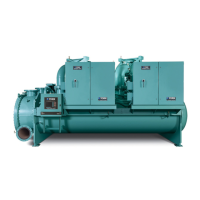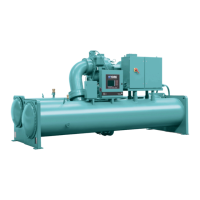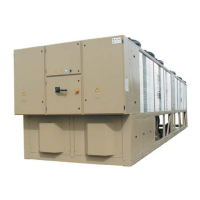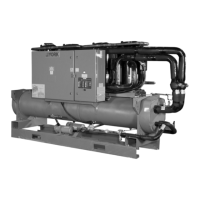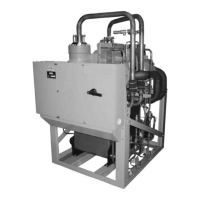Chemical water treatment
Since the mineral content of the water circulated through evaporators and condensers varies with
almost every source of supply, it is possible that the water being used may corrode the tubes or
deposit heat resistant scale in them. Reliable water treatment companies are available in most
larger cities to supply a water treating process which will greatly reduce the corrosive and scale
forming properties of almost any type of water.
As a preventive measure against scale and corrosion and to prolong the life of evaporator and
condenser tubes, a chemical analysis of the water should be made preferably before the system
is installed. A reliable water treatment company can be consulted to determine whether water
treatment is necessary, and if so, to furnish the correct treatment for the particular water condition.
Cleaning evaporator tubes
It is difficult to determine by any particular test whether possible lack of performance of the
evaporator is due to fouled tubes alone or due to a combination of troubles. Trouble which may
be due to fouled tubes is indicated when, over a period of time, the cooling capacity decreases
and the split (temperature difference between water leaving the evaporator and the refrigerant
temperature in the evaporator) increases. A gradual drop-off in cooling capacity can also be caused
by a gradual leak of refrigerant from the system or by a combination of fouled tubes and shortage
of refrigerant charge.
Cleaning condenser tubes
In a condenser, trouble due to fouled tubes is usually indicated by a steady rise in head pressure,
over a period of time, accompanied by a steady rise in condensing temperature.
Tube fouling
Fouling of the tubes can be due to deposits of two types as follows:
1. Rust or sludge – which finds its way into the tubes and accumulates there. This material usually
does not build up on the inner tube surfaces as scale, but does interfere with the heat transfer.
Rust or sludge can generally be removed from the tubes by a thorough brushing process.
2. Scale – due to mineral deposits. These deposits, even though very thin and scarcely detectable
upon physical inspection, are highly resistant to heat transfer. They can be removed most
effectively by circulating an acid solution through the tubes using skilled experts as described
below.
Tube cleaning procedures
The main methods of cleaning tubes includes brush cleaning and acid cleaning.
Brush cleaning of tubes
If the tube consists of dirt and sludge, it can usually be removed by means of the brushing process.
Drain the water sides of the circuit to be cleaned (cooling water or chilled water) remove the heads
and thoroughly clean each tube with a soft bristle nylon brush.
Important: Do not use a steel bristle brush. A steel brush may damage the tubes.
Improved results can be obtained by admitting water into the tube during the cleaning process.
This can be done by mounting the brush on a suitable length of 1/8 in. pipe with a few small holes
at the brush end and connecting the other end by means of a hose to the water supply.
The tubes should always be brush cleaned before acid cleaning.
Acid cleaning of tubes
If the tubes are fouled with a hard scale deposit, they may require acid cleaning. It is important
that before acid cleaning, the tubes be cleaned by the brushing process described above. If the
YMC
2
Mod B with OptiView Control Center
158
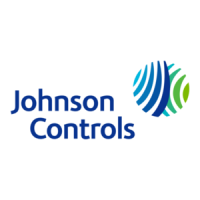
